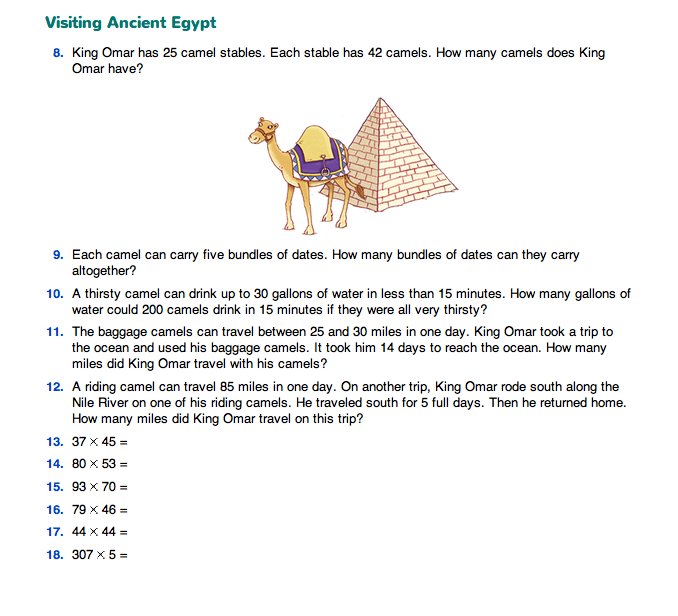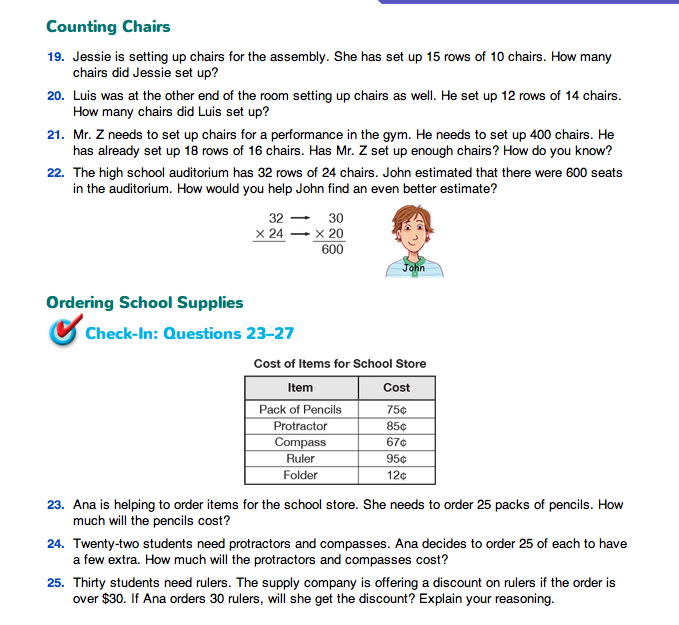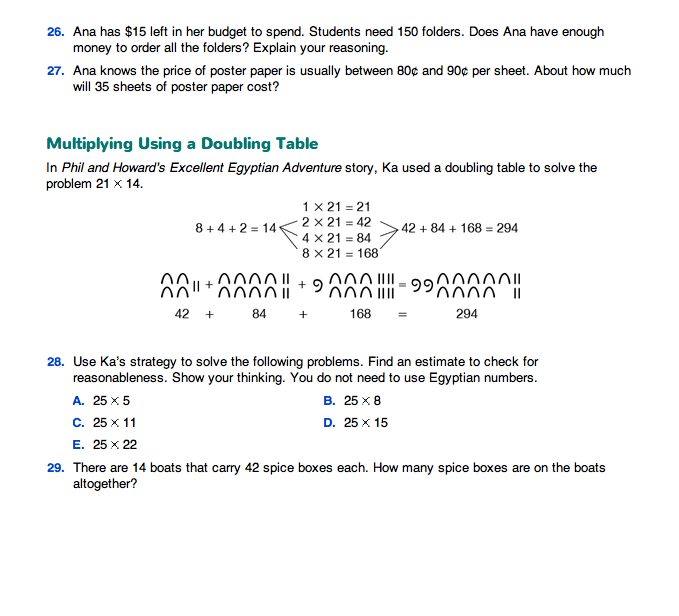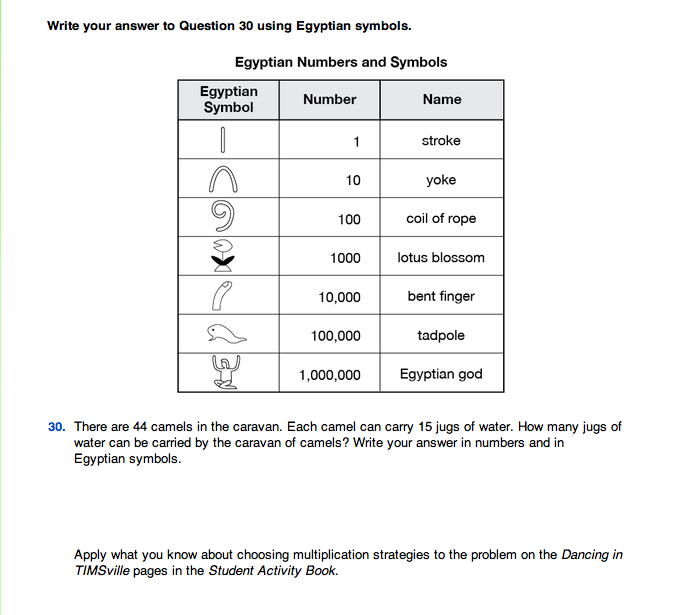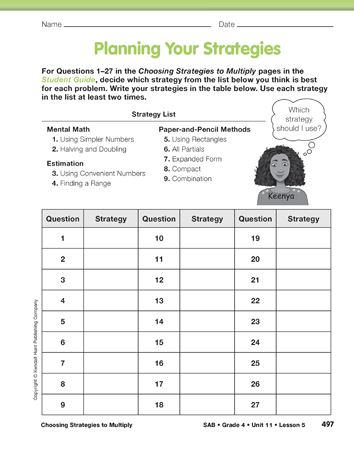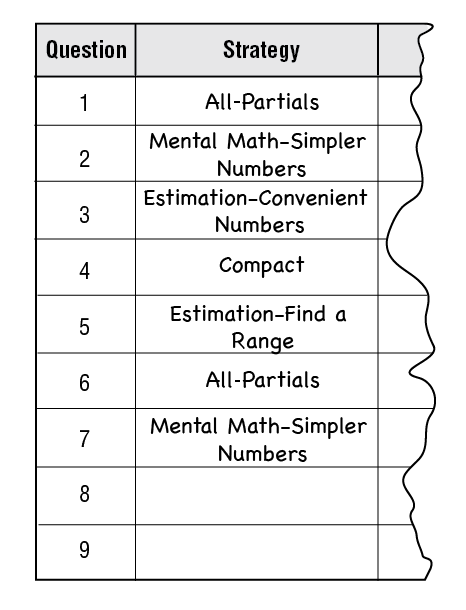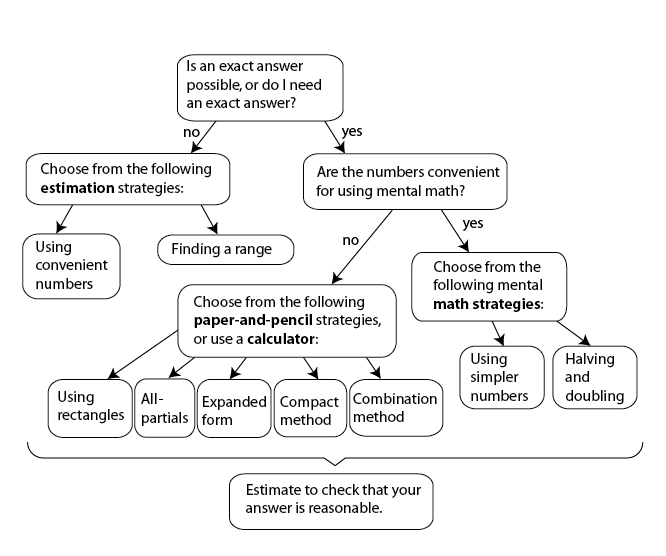Choosing Strategies to Multiply
Est. Class Sessions: 2Developing the Lesson
Part 3: Choosing Strategies to Solve Problems
Planning Your Strategies. With the class, read the instructions for solving the problems in the Victory Videos section in the Student Guide. Point out to students that deciding which method to use will be an important part of this activity.
Look over Questions 1–7 with the class. Ask students to use the Planning Your Strategies page in the Student Activity Book to keep track of the strategies they choose for each problem.
Begin a class discussion about choosing strategies by asking:
Have students write these strategies in the boxes for Question 3 and Question 5 on the Planning Your Strategies page.
Then ask:
Have students write their strategies in the boxes for any questions they decide to do with mental math. Continue this discussion until students have strategies written for each of Questions 1–7 on the Planning Your Strategies page. At this point, students' tables may look like the one in the example in Figure 1.
Solve Using Appropriate Strategies. Once students have selected strategies for the first seven problems, they solve those problems using the strategies they chose.
Before students continue to solve the problems in Questions 8–27 (in the Visiting Ancient Egypt, Counting Chairs, and Ordering School Supplies sections), have them work with partners to decide on strategies for each of those questions. Remind students of the following:
- Use each of the nine strategies at least two times.
- Keep track of how many times each strategy is selected from the Strategy List with tally marks.
- Start by finding the problems that can be solved by estimation.
- Next, find problems that can be solved using mental math strategies.
- Finally, select problems to solve using paper-and-pencil methods.
- Use estimation to check for reasonableness of answers for problems solved using mental math and paper-and-pencil strategies.
Figure 2 shows a process for choosing strategies. Use this chart as a guide for asking students key questions as they choose strategies for solving problems. Since the chart is visually complex, you may prefer to use it only as a teaching guide rather than giving it directly to students.
Students should select estimation strategies for Questions 3, 5, 10, 11, 21, 22, 26, and 27. These problems contain clues that finding an exact answer is either not necessary or not possible. See Content Note. All other problems can be solved by either paper-and-pencil strategies or mental math. Remind students to try to solve problems using mental math first. Students may show different comfort levels with mental math, but should be encouraged to practice mental strategies to increase their flexibility with computation.
Once student pairs have chosen a strategy for each question, they use their chosen methods to complete the problems in Questions 8–27. Some flexibility is appropriate here. If students decide to try a different strategy than the one they originally chose, they should be encouraged to do so. For example, as students solve problems, they may notice something new that leads them to estimate or to use mental math. Remind students to check all answers for reasonableness by performing a quick estimation strategy.
Multiply Using a Doubling Table. After students have completed the questions using their chosen strategies from the menu, have them use the doubling table method to solve Questions 28–30. Any problems not finished by the end of the first class session can be completed for homework.
















